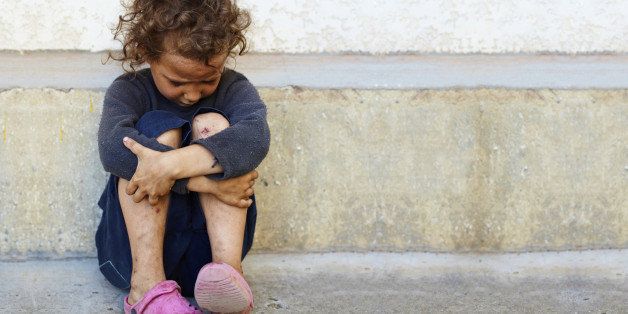
When many people hear child poverty in America, the first stereotype is an inner-city child and discussions about solutions to poverty often focus on concentrated poverty in urban areas. But in a nation where over 16 million children, more than one in five, are poor, the plain truth is that child poverty is pervasive and affects children everywhere although we know it affects urban, suburban, and rural children in some ways differently. The Children’s Defense Fund-Ohio (CDF-Ohio)’s new report “Health Disparities Are Leaving Ohio’s Rural Children Behind” shares findings often true for poor rural American children. As they say about Ohio’s 190,000 poor rural children: “These children go to bed hungry. Many of them live miles from the closest pediatrician, children’s hospital, and other services. They need help — and it is a different kind of help than what may be needed for children in Ohio’s cities.”
CDF-Ohio’s report notes that a few years ago, NBC News reported on pervasive hunger in Appalachian Ohio
“and the impact on families ‘who’ve had it all vanish — jobs, homes, and dreams — [and have to] choose between paying [their] bills and feeding [their] kids.’In an area defined by valuing self-sufficiency, families are trying everything before turning to emergency food banks. Anita Hayes, mother of a 14-year-old daughter, Lydia, and 9-year-old son, Lyle, describes this struggle, saying, ‘The first few times I had to swallow my pride. But I wasn’t doing it for myself. I have to feed my children. They come first.’ Anita, her husband, and her two children live in a camper without running water and borrow a neighboring trailer’s electricity. She describes feeling guilty that she can’t meet her children’s needs and that sometimes a bowl of cereal is ‘dinner in a household where the children are growing up fast.’ Too many children are growing up too fast, without adequate nutrition, in rural and Appalachian counties hard-hit by the recession where, despite being surrounded by farmland, food is often in scarce supply.”
Many rural children live in “food deserts” without close access to grocery stores selling affordable, nutritious food. Ohio areas like Vinton County have no full-service grocery store at all; a local school administrator said in a 2012 news story:
“You know that it’s an issue when a little kid is going through the lunch line, and they’re already asking what’s going to be for breakfast the next morning, because they’re concentrating on the fact that perhaps this might be their last meal before they come back to school the next morning.”
Food in rural communities often costs more because supermarkets are so limited and there’s less price competition. In part due to food insecurity, children in rural Ohio are at greater risk of obesity. Other factors including reliance on driving and a lack of community resources like public parks, playgrounds, and exercise facilities probably play a role too in putting children at greater risk for obesity-related physical, emotional, and psychological health problems that may diminish their quality of life from youth into adulthood.
Poor access to health care is a second piece of the rural health disparities puzzle. Put simply, poor children in rural Ohio have more trouble than children in other parts of the state finding doctors to care for them. CDF-Ohio found this is part of a national trend: Regions with a low supply of pediatricians are disproportionately rural and tend to be poorer than high-supply regions. Nearly 1 million rural children live in areas with no local pediatrician. This shortage of general pediatricians and family doctors serving children in rural areas is compounded by a lack of access to pediatric subspecialists. In the United States, there are approximately 28,000 pediatric medical subspecialists and surgical specialists to care for over 80 million children. Most practice in academic settings, often a long drive from rural areas. About one in three children must travel 40 miles or more to receive care from a pediatrician certified in adolescent medicine, developmental behavior pediatrics, neurodevelopment disabilities, pulmonology, emergency medicine, nephrology, rheumatology, or sports medicine and there is a shortage of available critical care for children in rural emergency rooms. Finding a dentist is a huge challenge too.
CDF-Ohio offers solutions to some of the health risks poor children face including teaching families how to grow healthy food and community-based fitness and wellness programs. New ways of providing health care for rural children including community center- and school-based or linked health services, mobile dental vans, and new uses of technology like videoconferencing consultations are helping. Some key state policy changes could make a difference like tax incentives for buying nutritious food, encouraging more grocery stores in rural areas, increased public transit, and more incentives like loan forgiveness programs for graduates of the state’s medical schools to practice in rural areas.
The new Ohio report sums it up: “While there are great barriers to health care for rural and Appalachian children, there are also great opportunities to act and ensure a healthy future for all children across Ohio. Now is the time to act.” Another report just released this week by First Focus reaffirms the importance of ensuring health care for rural children across the country. It also makes clear that children in rural communities are more likely than their urban peers to get health care through the Children’s Health Insurance Program (CHIP) and Medicaid, and reinforces the importance of extending CHIP funding now for four more years. We must keep CHIP for these children as we seek other improvements on their behalf as well. I hope not only Ohio but every state will do more for the too often hidden rural poor children in our midst.
